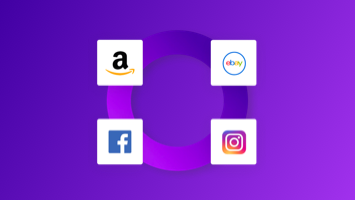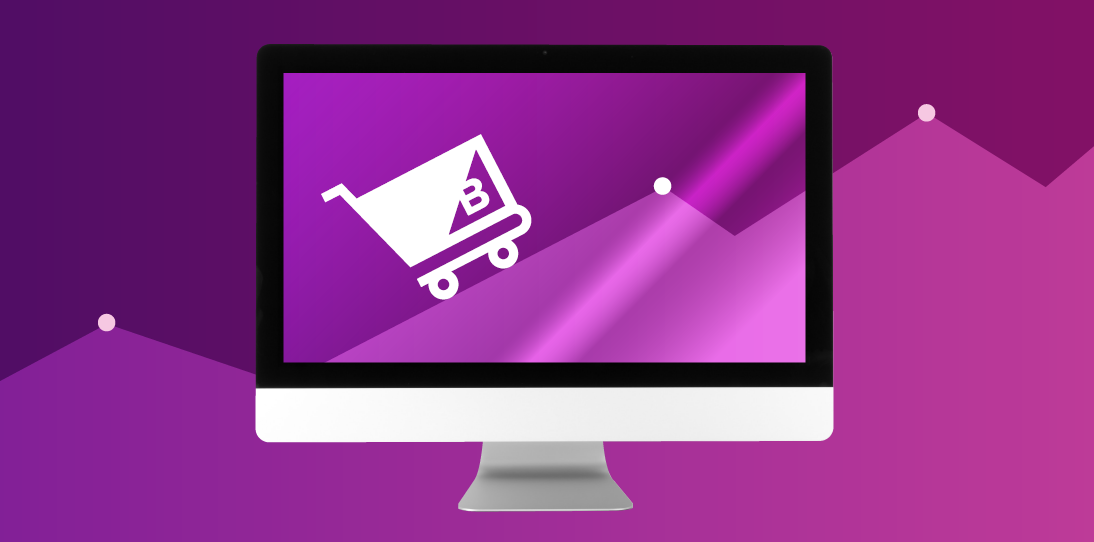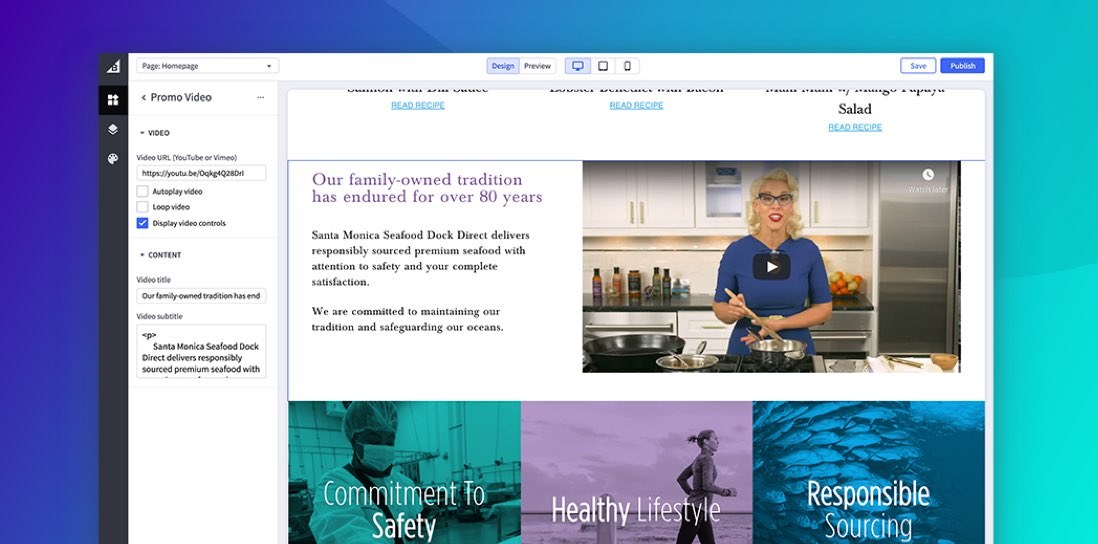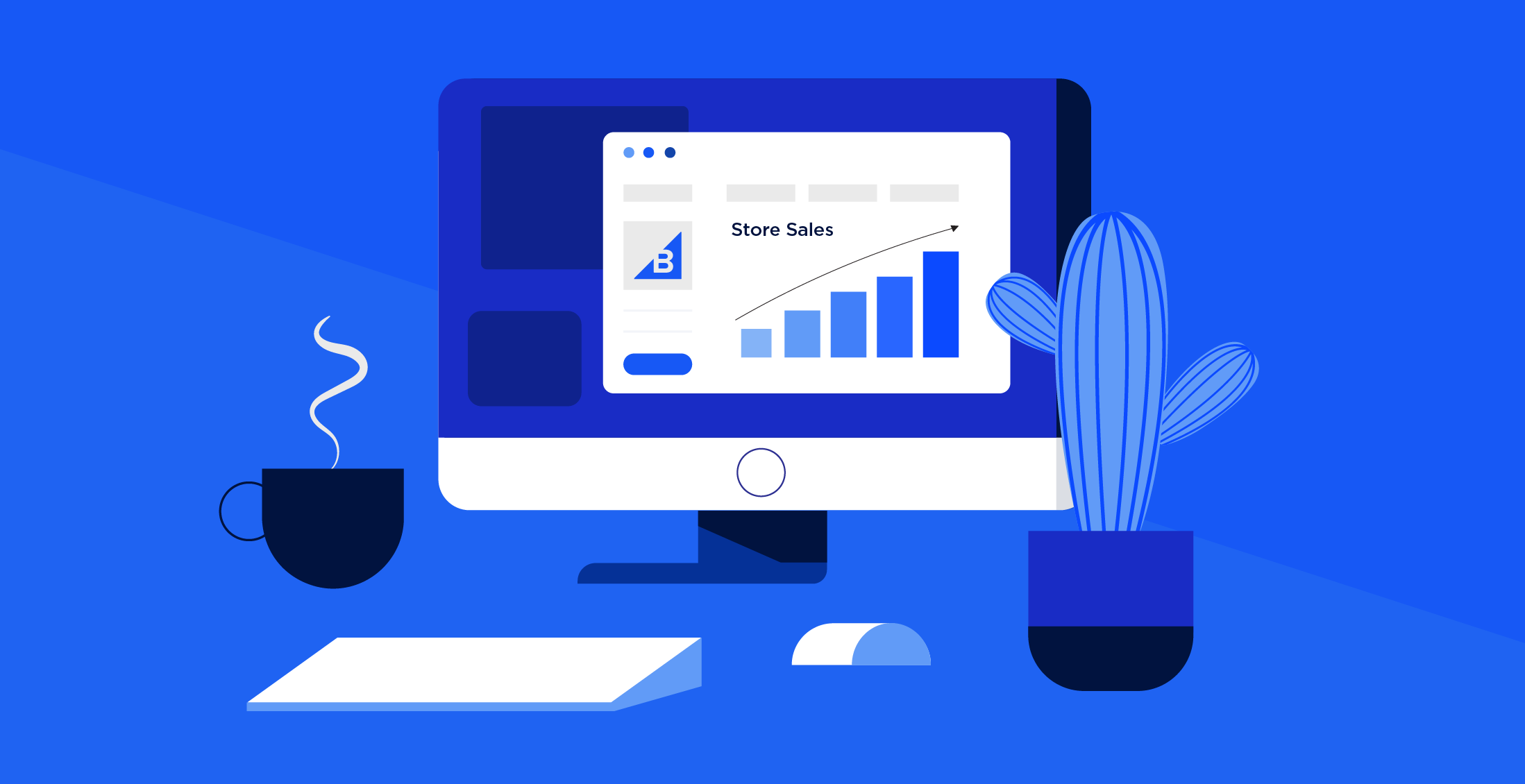- Enterprise
- Essentials
30 Ecommerce Conversion Rate Optimization Steps to Help Boost Sales

Increase Your Ecommerce Sales from $1 million to $100 Million
TABLE OF CONTENTS
In an increasingly competitive digital buying world, there are some dos and don'ts to encourage customers to buy items from your business. These processes center around conversion, which is just about the most important metric you'll need to watch as you plan on building your business and increasing revenue.
Conversion rates — and the personalization that goes along with them — are among the most valuable tools for ecommerce organizations to measure return on investment (ROI). Using conversion rates to understand how to optimize your website correctly can significantly raise your ROI.
In fact, according to a survey conducted among marketers in both the U.S. and the UK, almost 90% of personalization efforts result in a positive ROI.
However, It is important to remember that conversions don't just happen — businesses need to prioritize them and, perhaps most importantly, optimize for them.
This applies whether you are just starting up and running the whole show yourself or if you are an ecommerce manager or marketing director who has signed up to hit massive goals and KPIs for the year. First, let’s begin by defining a conversion – which often has a different definition business to business.
Understanding Ecommerce Conversion Rates
An ecommerce conversion rate is the percentage of website visitors who purchased something from your online store.
Below are typical conversions for ecommerce websites:
- An online sale.
- Added products to a cart.
- Added items to a wishlist.
- Email signups.
- Social media shares.
- Any KPI your company finds valuable.
Conversion is such a broad topic because it can be impacted by every aspect of the user experience on your site.
Conversion rate optimization (CRO) improves the shopping experience to drive a specific KPI — usually, sales. Conversion rate optimization can be conducted on landing pages, category pages or any other customer touchpoint. This ecommerce CRO guide covers how to increase ecommerce conversion rates on your site.
How is Conversion Rate Calculated?
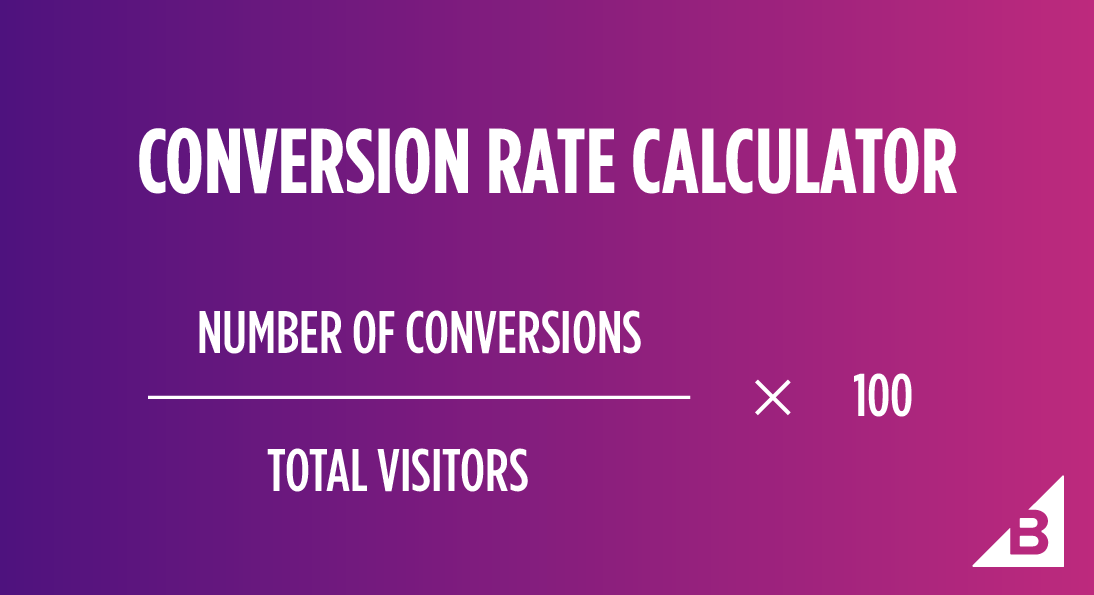
If your online store is getting 5,000 visitors and 50 conversions for a set period, that means your store’s conversion rate is 1%.
It is often as simple as that. Divide conversion by the total number of visitors, and you have the conversion rate. Most analytics tools provide conversion rates within any data segmentation, which we’ll get into in the sections below.
Before working to increase conversion rates, you need to know what your current visitors are doing to set up proper ecommerce conversion rate benchmarks for your online store. Where are customers getting stuck, and how are they interacting with your website?
Once you find your benchmarks, they should be compared to measure success.
When experts talk about increasing conversions, you will hear a common theme: testing. However, it is essential to know what your current conversion issues are and understand the basics before knowing what you should test.
What is a Good Ecommerce Conversion Rate?
Average ecommerce conversion rates are around 2.5-3%. Even if you are doing everything right, you can still expect to win the sale around 2-3% of the time.
A 3%-plus conversion rate should be the baseline goal for your online store. Once you are able to achieve that, then you can move on to more advanced conversion rate tactics.
Additional Metrics to Help Measure Ecommerce Conversions
Beyond how well your store converts, a few other metrics matter when discussing conversion.
Moving these metrics in the right direction will generally help your overall store conversion rate.
Bounce Rate.
Bounce rate is the percentage of people who leave after viewing a single page.
A high bounce rate is not ideal since they indicate people aren’t finding what they’re looking for in your store, and are leaving immediately after landing on your site.
Exit Rate.
Exit ate, often confused with bounce rate, is the percentage of people who leave after viewing the page. Your exit rate lets you know the last page users view before moving on.
A very high exit rate on a specific page can be a red flag — this is one metric you can look to drive down with landing page optimization.
Click-through rate (CTR).
Click-through rate is the number of people who click a link to your website from an ad or email.
Optimization for AdWords or email marketing campaigns often focuses on getting more users to click through to your website and take action — or even engage on social media.
Average Session Duration.
Average session duration is an engagement metric that gives you a general idea of how long people are on your site.
A high bounce rate means a low average time on site — visitors aren’t sticking around long enough to convert.
Average Page Depth (AKA Pages Per Session in Google Analytics).
Average page depth is an engagement metric that tells you how many pages a potential shopper visited before leaving. This metric measures total pageviews per session duration. Note that more page views can mean more engagement or a lack of clarity in your conversion funnel if no conversion is present.
Tools That Can Help Improve Ecommerce Conversion Rates
There are some invaluable and useful ecommerce tools to help analyze your current conversion rate issues, including:
HotJar.
HotJar is an excellent tool for understanding how your users interact with your website from a high level.
As a heat mapping tool, you get the functionality of click, cursor movement and scroll-depth mapping. Depending on your plan, each heatmap experiment will allow you to see where users click, move or scroll on your site — giving you an inside glimpse into their behavior patterns.
Other proprietary tools such as live user playback, real-time suggestion boxes and personalized user surveys can provide your business with the information on how best to interact with users and what services they are looking for.
Additionally, you can set up attribute-based filters based on visit length, page views, country, device and more — individually or in combination — to drill down deeply on specific segments and types of users.
Quantcast Measure.
Quantcast Measure is a tag-based analytics tool that fills a niche between Google Analytics and Facebook Analytics in that it measures users’ site usage and provides advanced demographic data on a per-click basis.
The result of this is deep insights into who visitors are on a personal level which has translated into business intelligence for creative teams who can tailor messaging and imagery to resonate more deeply.
Also innovative is Quantcast’s option to view metrics on a composition view — demographics as a percentage of the whole — as well as on an indexed basis compared to the average website based on your country.
In essence, this powerful tool allows you to gain valuable insights into the segments of visitors that you’re reaching disproportionately to the general public.
Google Analytics.
For most websites, Google Analytics can be an extremely valuable asset. The platform gives you a great view into your website visitors, including:
- How visitors found your website. This could be from keyword searches on Google, referral websites or direct visits.
- How long visitors stay on your website.
- Where the visitors come from.
- If the visitors are returning or new.
- What browser or operating system was used, and if the visitor used a mobile device or computer.
- How many visitors converted, and which interaction led to the conversion.
- Link to your Google Adwords campaign to track paid traffic as well.
Google Analytics Setup
Ready to use Google Analytics on your website but not sure how? Learn how to setup GA and get the most out of this important tool.
Get StartedBigCommerce Analytics.
BigCommerce's platform has an Analytics section within the administration panel that displays all abandoned carts, including what products were in the cart at the time of abandonment.
There are also analytics on In-Store Searches showing what customers are typing into the built-in BigCommerce search engine tool.
This underutilized conversion optimization tactic helps bridge the gap between what your customers are looking for, and your on-site language and content.
Look at keywords your potential customers are searching for that are not showing up. This can help you determine what follow-up steps are needed, such as adding things into the store.
BigCommerce Analytics has multiple other Analytics dashboards that are most useful when you have customers. The two above will help you diagnose conversion problems without customers. BigCommerce merchants can schedule some time with our team to learn more about conversion rate coaching from BigCommerce University.
30 Ways to Boost Your Ecommerce Conversion Rates
1. Use high-quality images and video on your product pages.
Think about what you want to see when you are shopping.
When shopping online, you can’t touch the product or put it on. The best thing you can do is show a detailed image or video so that the customer knows exactly what they are getting.
Using high-quality images and videos on the product pages can help users better visualize products they are interested in and increase conversion rates.
2. Offer free shipping.
Online shoppers expect a certain standard that they have grown accustomed to on Amazon. In today's market, free shipping is an absolute must. If your store does not offer free shipping, customers are likely to look elsewhere.
An alternative option to free shipping is to increase product prices to cover the shipping costs. However, shoppers are savvy — if your prices are exorbitant, they will quickly move elsewhere.
3. Provide limited-time coupon codes.
Create coupon or discount codes that customers can use at checkout for a limited time to get a specific amount off or a percentage of the purchase.
When your coupon code expires, this will drive a sense of urgency, and shoppers can make their purchase decisions without distractions.
4. Be competitively priced.
If you are selling brand-name items that many other stores offer, you will likely need to price your products at or below the average price to compete. Be sure to adjust your prices frequently to see what resonates.
The quality of your marketing and imagery will also heavily influence the price someone is willing to pay. Market your brand to the right audience with the right messaging and imagery, and the revenue will come in.
5. Tweak and test your ecommerce checkout process.
If your store checkout process is too long, complicated or unconventional, you may lose a lot of customers right as they are ready to buy.
This crucial step in the funnel is where many of your A/B tests and personalization strategies should take place. There are industry standards for most hosted ecommerce sites, but you may still need to tweak the process based on your customers.
6. Use shopping cart abandonment software.
If you consistently deal with abandoned carts, then abandoned cart software can help increase your store conversion rates.
Some ecommerce platforms offer this type of software free as part of the store functionality — BigCommerce among them.
The success of this software is different for every business, but there is no doubt that it can help ecommerce stores that use it.
7. Use live chat software and chatbots.
Using live chat support software and chatbots to interact with customers can help your customers get answers to their questions quickly and without long wait times over the phone.
The two are often viewed as alternative options to each other, with chatbots often replacing the human element of live chats. However, companies that can leverage the usage of both — with chatbots interacting with customers in off-hours — will likely find the greatest success.
8. Let customers know your ecommerce store is safe.
Organizations need to build trust quickly for customers to be willing to enter their credit card information on your website. Split tests have shown that trust signals can significantly increase conversion.
Finding different ways to enhance your on-site trust and credibility should be the basis for many of your conversion rate optimization activities.
Customers want to know that they are dealing with a legitimate store with industry-standard security measures. This ensures them that their credit card information will be protected.
Here are a few things that help:
- Install SSL at checkout (out-of-the-box on most ecommerce platforms) and site-wide if possible.
- Show small images of credit cards, PayPal and other payment options as a visual signal that you use customer-trust payment options.
- Display McAfee, GeoTrust or other security badges, and make sure that you have an active account with them. Don’t just add an image if you aren’t truly secure.
9. Structure your site so visitors can easily find products.
Structure your product categories in a logical manner by providing options such as 'Shop By Color,' 'Shop by Product Type,' etc. The goal should be to make sure that you use as few levels as possible to allow a user to reach a product as fast as possible.
Setting up a rotating banner to showcase top products as well as implementing a website search to allow customers to find products easily can make a world of difference to your customers. It is critical to remember that the faster a visitor can find a product, the more likely they are to buy from you.
10. Make your checkout form easy to understand.
Ensure that everything on your checkout form is completely understood, such as CVV and input formats.
If possible, limit what can be typed into specific form fields to make the process streamlined for users.
- When a user types a credit card number, format it for them as they go along to make it easier to read and harder to mess up.
- In a date field, don't let the user type but have a date picker or dropdown.
It is critical to ensure that you don't give users any reason to feel uncomfortable or make it difficult for them to check out — especially since users are often reluctant to enter their personal credit/debit card info.
Digital wallets help tremendously with this.
Digital wallets are payment processors and apps like PayPal Express, Amazon Pay, Apple Pay, etc. These systems allow users to sign in with their account information and then pre-populate everything. It is faster and more secure for everyone.
11. Always show shopping cart contents.
If they can't find their cart, they cannot checkout.
Make sure to show a shopping cart icon with a link to get to it after the user has entered an item into the cart, and allow customers to see what they are buying as they checkout.
12. Let customers checkout as guests.
Allow users to checkout without signing up for an account since you will likely have their name and email address when they buy anyway.
Forcing the user to register gives them another reason to leave your store.
13. Give detailed product descriptions.
Make sure you describe the product in great detail so that customers know precisely what they are getting.
Remember, they can’t touch the product, and they are not in a store where they can ask questions. Not to mention that this will help to prevent returns.
Adding a product video or demonstration can also act as a fantastic supplement to product descriptions.
14. Allow customer reviews and provide product testimonials.
Why do so many people buy from Amazon? It is due in no small part to the presence of their product reviews.
In the digital shopping world, customer reviews are a must-have. The presence of customer reviews acts as a signal to shoppers and potential customers about the validity and success of your business.
Driving positive reviews can make or break your business. To help, you can offer customers a coupon code or other types of incentives next time they purchase as a reward for providing a review.
Similarly, product testimonials are a fantastic attribute for service-based businesses. By having customers describe why they chose your business and the benefits they've received, you're establishing your organization as one that can be trusted to provide a valuable product.
15. Make your “Add to Cart” and “Checkout” buttons prevalent.
When a user is considering a purchase, they can be further prompted by an actionable button that says exactly what to do and stands out from all the other surrounding text and images.
The absence of these buttons is often the result of marketers overthinking things, as long as you’re not obnoxiously hitting people over the head with CTAs.
BigCommerce now offers a customizable Buy Button that you can easily add to your site to gain those conversions.
16. Have a great product return policy.
Around two out of every three customers will read the return policy before buying. Don’t over-promise here, but make it as painless and as easy as possible for customers to return products.
This may not sound like conversion optimization, but it is another example of basic business practices acting as CRO. By gaining trust from your customers with an easy-to-use return policy, you can drive sales and increase your conversation rates.
17. Optimize for mobile devices.
By 2025, more than 10 percent of all retail sales in the United States is expected to be generated via mobile commerce — a growth of nearly 7% since 2018.

If your ecommerce store does not provide a great mobile experience, you are missing out on a significant number of sales.
Hosted stores such as BigCommerce support this out of the box, but you may need to tweak how it looks and works on a mobile device for your own specific business needs.
18. Display your phone number prominently.
Having a phone number prominently displayed on your website can help reduce your customers' anxiety. They will know that they can always pick up the phone and talk to someone if something goes wrong.
This touch of authenticity can go a long way in increasing your conversion rates.
19. Provide valuable content.
Write valuable and functional content to supplement your products. The more value and information you can provide your customer, the more likely they will buy from you.
Writing content on your product landing pages and using blog content to educate, inform and engage your target audience will help increase organic SEO traffic.
20. Capture emails.
Site visitors may take more than one session on your website to convert, so capturing emails on your site is crucial.
If you can effectively capture emails through a pop-up, offer a coupon code so you can continuously market to them while they are in the decision phase, significantly increasing your conversion rates.
Checkout BigCommerce’s full list of one-click email marketing integrations.
21. Grab visitors’ attention quickly.
If you can't grab the visitor's attention in the first few seconds, you've probably lost them.
Product images will be the first thing someone sees and uses to judge a website subconsciously. Make sure if you are going to use large images on the homepage to choose carefully and try to catch visitors' attention positively.
22. Use calls-to-action sparingly.
Don't overwhelm visitors with too many options and CTA buttons on one screen. Whether it is 'Add to Wishlist,' Share Icons', 'Add to Cart,' or 'Learn More,' having your CTAs all in the same area, on the same page, can ensure that your pages aren't over-cluttered.
Drive the user to whichever call to action button you want them to select or perform on that page. If they are on a product page, use ‘Add to Cart.’ If they are on the Cart page, use ‘Proceed to Checkout.’
23. Clearly state your unique selling proposition.
Explain why a visitor should buy from you.
What makes you different from all the others selling the same products? What is your unique value proposition? Why would I buy from you?
Be funny. Be smart. Be you. Otherwise – why should someone shop with you over anyone else?
24. Spell check your copy.
Misspelled words and improper formatting reeks of unprofessionalism. Make sure you spell everything correctly.
While it may seem like a minor detail, correct spelling and grammar can help position you as a serious, intelligent business. Not doing this may hurt your sales as people will lose confidence and trust in your company.
25. Measure your ecommerce conversion rate optimization success.
There are a couple of great ways to make sure your tweaks and changes are working. The obvious one is to verify that your conversion rates are increasing.
BigCommerce tracks your store’s conversion rates day-over-day, week-over-week, month-over-month, quarter-over-quarter, year-over-year and in any customizable way you want to see it. You can view this easily on your dashboard or the Analytics Dashboard.
There is more than just increasing conversions, though, as you want to make sure your value per customer or bottom line is growing. It’s more important to know what you will do with the traffic you receive than to just try and always get more traffic.
Make the most of what you already have, and then push for more traffic.
26. Implement a browse abandonment campaign.
By using a tool like Klaviyo, you can trigger emails to your customers when they are browsing your website and do not make a purchase.
You can send them a coupon for the products they were just looking at or a gentle reminder of why they should buy and not miss out on the deal.
27. Always be testing.
The best way to improve your conversion rates on your website is to be A/B testing new ideas constantly, from button color and font size to whole page redesigns.
You can leverage tools like Google Optimize for free. Depending on the test, you may need design and development help.
28. Personalize.
With powerful user tracking and communication software available off the shelf, there’s no excuse for not personalizing the user experience.
Creating personalized experiences for your customer will shorten the path to purchase and increase your conversion rates. Personalized user experiences also allow you to keep your message and desired action the focus of the user across platforms.
29. Implement progress bars on checkout.
Adding a progress bar to your checkout process will let your customers know where they are in the process and how much longer it will take to complete their purchase.
By making the checkout process more accessible and streamlined for customers, you're opening yourself up to repeat visits and a greater customer experience.
30. Add filters to your category pages.
Filters are crucial in helping your customers navigate and drill down to the right products.
Perform research to find out the different questions your customers share about products and create filters on your category pages for them.
For example, suppose one of your customers’ main objections to purchasing products is price. In that case, you can create a price filter on the category page and eliminate their objection by filtering for products they can afford.
The Final Word
In 2020, the total global shares of consumers who shopped online was around 85%.

As online shopping becomes more and more of a driving force within retail and ecommerce businesses, having a successfully implemented website is critical to both short and long term success.
Boosting ecommerce conversion rates should be the number one priority for businesses because they encourage customers to do what is most important, buy your products.
FAQs About Ecommerce Conversion Rate Optimization (CRO)
Why is conversion rate so important?
Conversion rates are an effective, proven method of measuring the performance of different digital marketing strategies and channels on your platform, whether that is your website or online store.
Understanding where customers are on your site and what they’re clicking on provides the information your business needs to gauge the success of each page, CTA or even the website itself.
Can I do conversion rate optimization myself?
Yes. Through consistent A/B testing and planned optimizations, even the smallest company can perform conversion rate optimizations.
However, advanced optimizations as noted in this piece can be difficult for organizations without the help of dedicated platforms. As a business scales, it will need to be honest about the depth of work capable without a software solution.
Is CRO free?
Similar to the question above, the answer to this question is yes. It is possible to craft a CRO plan without additional costs through A/B testing.
Again, though, this process becomes exponentially more difficult as your company scales in size. Without the help of a dedicated platform, businesses may find themselves struggling to keep up.
Does my website need conversion rate optimization?
Whether your website actively measures it, conversion rate is still a process that occurs. Everytime an individual goes through your website and decides whether or not to click on a CTA or purchase a product, your conversion rate is affected.
If your business is also successful without optimizing your conversion rate, you may think that you’re in the clear. However, consider how much more money you could be making if you decided to optimize.
The average conversion rate of online shoppers worldwide is around 2.7%. Increasing that number just slightly for most businesses can have a radical effect on your bottom line. You can decide against CRO, but you’re likely only hurting yourself in the process.
